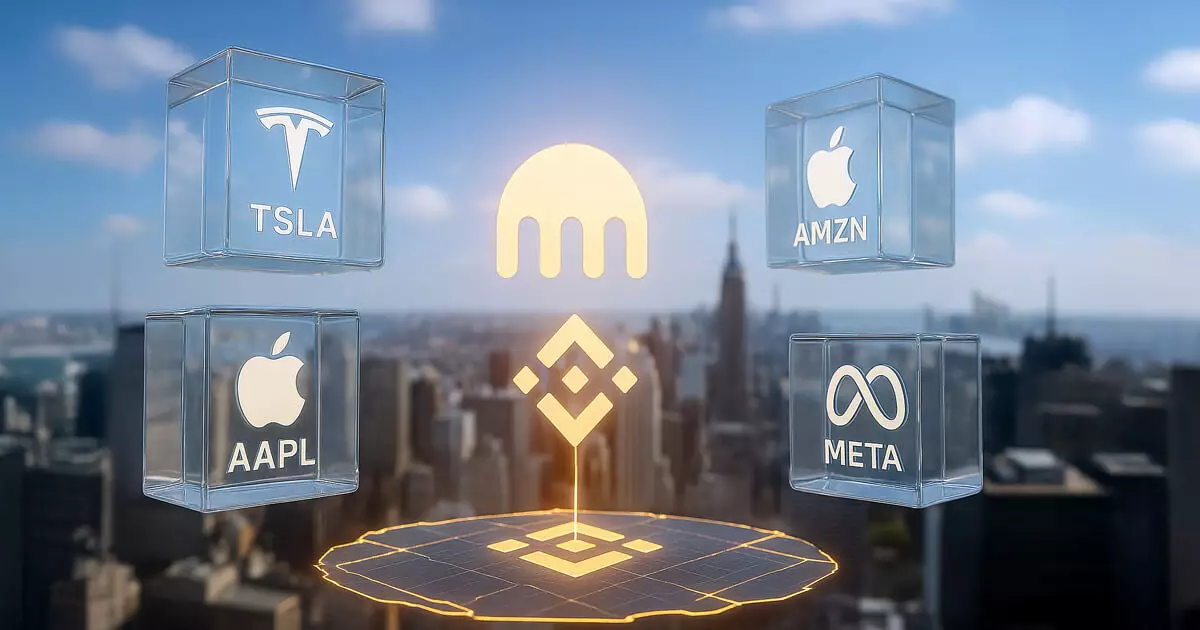The recent announcement by Kraken to integrate tokenized US equities onto the BNB Chain signifies more than just a technological milestone; it exposes the fragility of the traditional financial ecosystem. Transitioning digital assets like Apple’s AAPLx or Tesla’s TSLAx beyond U.S. borders threatens to upend the old guard of centralized exchanges. By leveraging blockchain’s programmable features, Kraken aims to create a truly borderless and decentralized marketplace—an inevitability that traditional finance cannot afford to dismiss. This move boosts accessibility and fluidity but also exposes systemic vulnerabilities rooted in legacy mechanisms, as global investors gain real-time, frictionless access to assets once confined by order books and custodial controls.
This strategy highlights a broader shift toward a multichain future, where the concept of ownership and transfer automation erodes the dominance of traditional custodial bodies. When equities become programmable primitives capable of instant settlement and seamless transfer across protocols, existing institutions risk obsolescence. The narrative of slow, scheduled trades and rigid clearinghouses no longer resonates with the demands of a globalized economy craving speed and efficiency. Kraken’s initiative essentially questions why legacy exchanges should remain untouchable relics, safeguarded by geographical restrictions and outdated trading hours.
Tokenization as a Catalyst for Disruption and Power Shifts
Industry giants and innovative startups alike are converging on the concept of asset tokenization, viewing it as both an opportunity and a threat. Firms such as Robinhood, BlackRock, and other Wall Street stalwarts are exploring blockchain-enabled securities, signaling a paradigm shift that may radically alter market dynamics. With tokenized assets projected to hit $30 trillion by 2030, the momentum behind this movement cannot be understated. It’s a direct challenge to the monopolistic claims of traditional exchanges like NYSE or Nasdaq, which thrive on scheduled trading hours, centralized liquidity pools, and income streams from transaction fees.
The shift toward 24/7 trading and decentralized liquidity pools offers undeniable advantages—more opportunity, flexibility, and lower barriers— but also internal risks. Increased volatility during off-hours becomes an inevitable complication in a digitalized finance landscape that prioritizes constant accessibility. Traditional venues, built on centralized control and regulated standards, will find themselves increasingly impotent against decentralized platforms capable of atomic settlement and programmable trading. Their revenue streams—mainly from order execution and data sales—face erosion, compelling them to alter their fundamentally slow, bulky operations or face stagnation.
The Future of Finance: A Narrow Path for Legacy Institutions
As tokenized stocks move mainstream, traditional financial institutions are in a precarious position. They can either adapt rapidly to the decentralized wave or risk being rendered obsolete. Blockchain-based settlement, trading protocols, and programmable assets threaten the dominance of institutions that have long prided themselves on custodial authority and predictable trading hours. The question is whether they will embrace this revolution or resist it, risking irrelevance.
The ongoing integration of tokenized equities and blockchain-based assets signifies not just a technological evolution but a fundamental ideological shift. It challenges the very foundations of central authority in finance, pushing toward a future where “trust” is replaced with transparency and efficiency. Those who understand this transition best will position themselves to capitalize, while laggards risk watching their traditional revenue streams vanish amid an increasingly digitized, democratized financial world.













